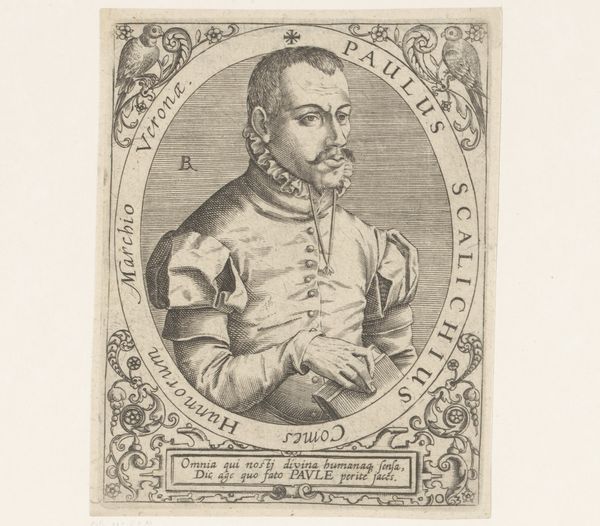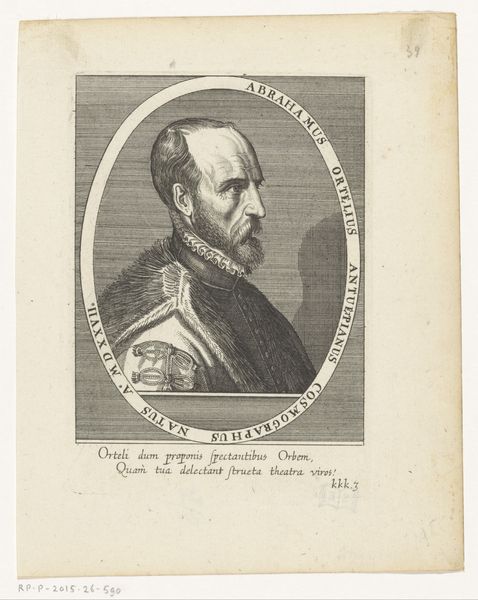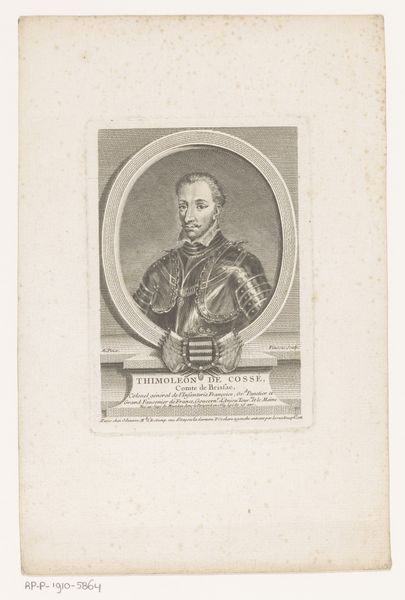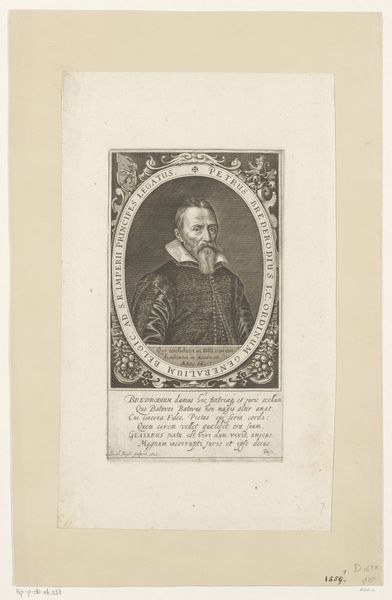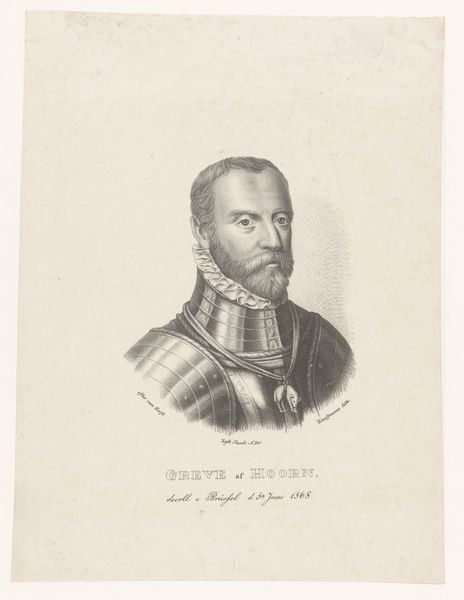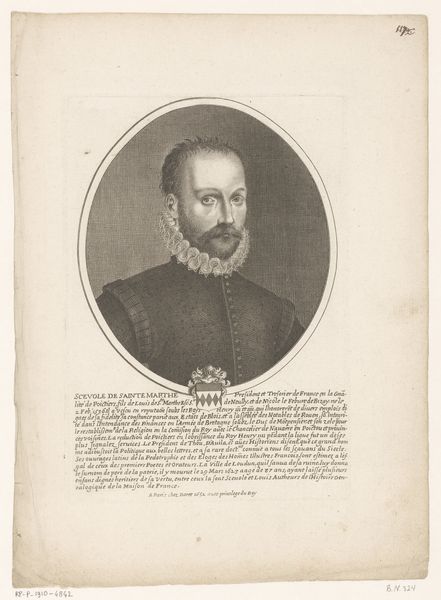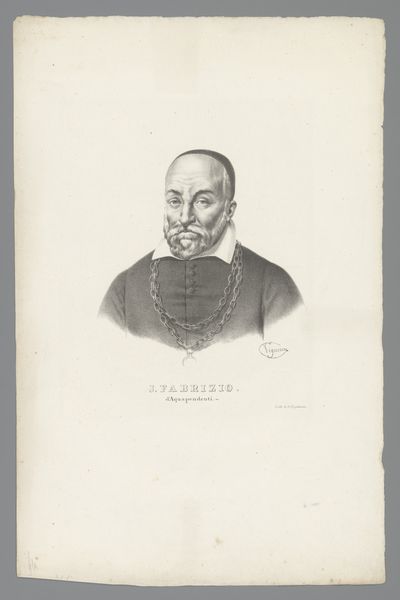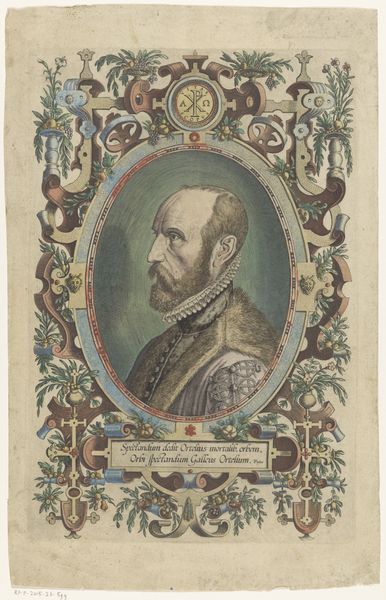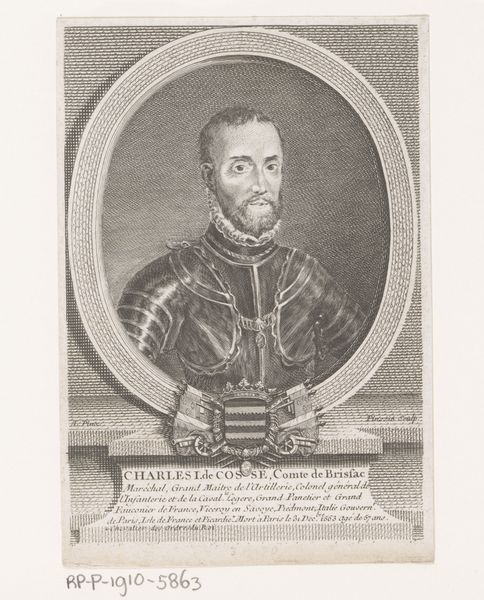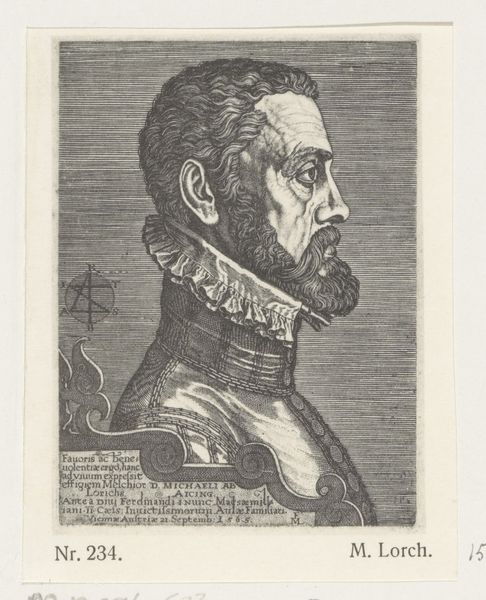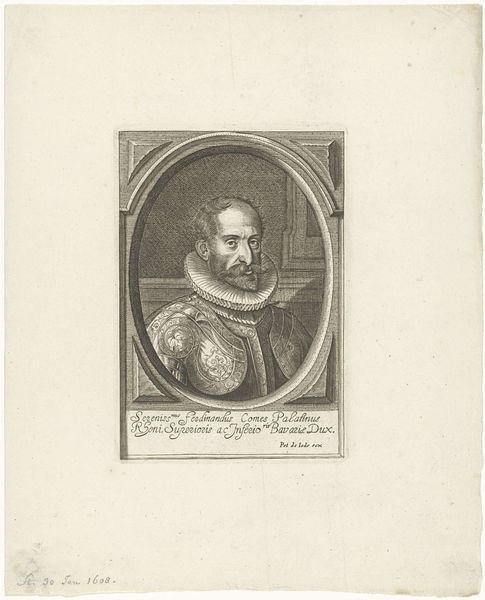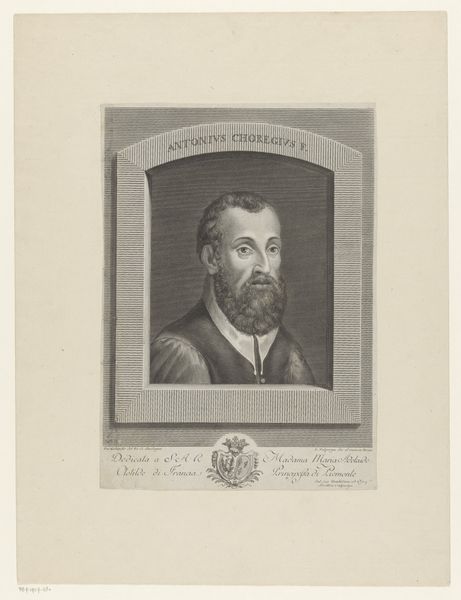
engraving
#
portrait
#
baroque
#
engraving
Dimensions: height 191 mm, width 131 mm, height 272 mm, width 185 mm
Copyright: Rijks Museum: Open Domain
Curator: Here we see a finely wrought engraving titled "Portret van Michael von Aitzing." Created around 1618, the artist is, unfortunately, unknown. It’s currently housed in the Rijksmuseum. What strikes you first about this work? Editor: The stark contrast immediately draws the eye. The artist masterfully utilizes light and shadow in the engraving process. Look at the detailed texture, especially around his ruffled collar. It adds depth, an interesting interplay of positive and negative space that seems almost palpable. Curator: Absolutely. Aitzing, shown here in profile, was quite a figure. The Latin inscription suggests this portrait immortalizes his intellect. He lived by his genius, defying death, as the phrase "vivitur ingenio, caetera mortis erunt" so eloquently puts it. What enduring ideas or symbols are visible? Editor: Consider the armor, not merely attire but a signifier of social standing and authority. The way light reflects gives it presence. And there's that heraldic crest in the lower corner which provides clues about his lineage and position in society. Every single stroke speaks. Curator: Precisely. The Baroque era favored ornate detail, reflecting a societal fascination with hierarchy. Armor wasn't just protection, it was a symbol. It told the story of lineage, of status. A visual language immediately understood. Editor: One can't overlook the stark realism of the face. Every etched line seems to articulate Aitzing's world. This gives character through both formal execution and narrative suggestions. It feels remarkably…present. Curator: Indeed. In the context of early 17th century Europe, images served as more than representations. They became active participants in constructing identities, reinforcing social hierarchies, and perpetuating cultural memory. To look at it this way makes me believe that this portrait really did outlive Michael, to some degree. Editor: The image exists as a network of intention, construction, and the symbolic values attached by both the artist and the sitter. Thank you for elaborating on that, truly fascinating.
Comments
No comments
Be the first to comment and join the conversation on the ultimate creative platform.
